As many most developed cities like New York City, London or Paris have long forgotten their long history of chaotic, low-regulated street markets, Hong Kong still allows hawkers, mongerers and chafferers to strive in some designated zones. Some particularly exciting ones stretch all the way from Mong Kok Stadium to Austin Road, featuring live animals, souvenirs, magic, stones and antiques.
Economically speaking these markets easily demonstrate econ 101. There are plenty of merchants and customers, nobody seems to have any abnormal market power, and because all shops are found in a small area, customers can easily compare prices, and competition is fierce. Margins are low, and the consumer seems to win, at least judging by the comparatively great deals you can get.
To find a more profitable niche, shops have to specialize, leading to a huge variety in products and services.
The market, however, is not as free as you might think. Just like in Taxi licensing, many problems come from the restrictive licencing of such markets. In many cases new licences have not been handed out since the 70s, and reform is not in sight.
I invite you on this stressful but rewarding journey through which you can buy literally anything that the endless factories of mainland China have to offer.
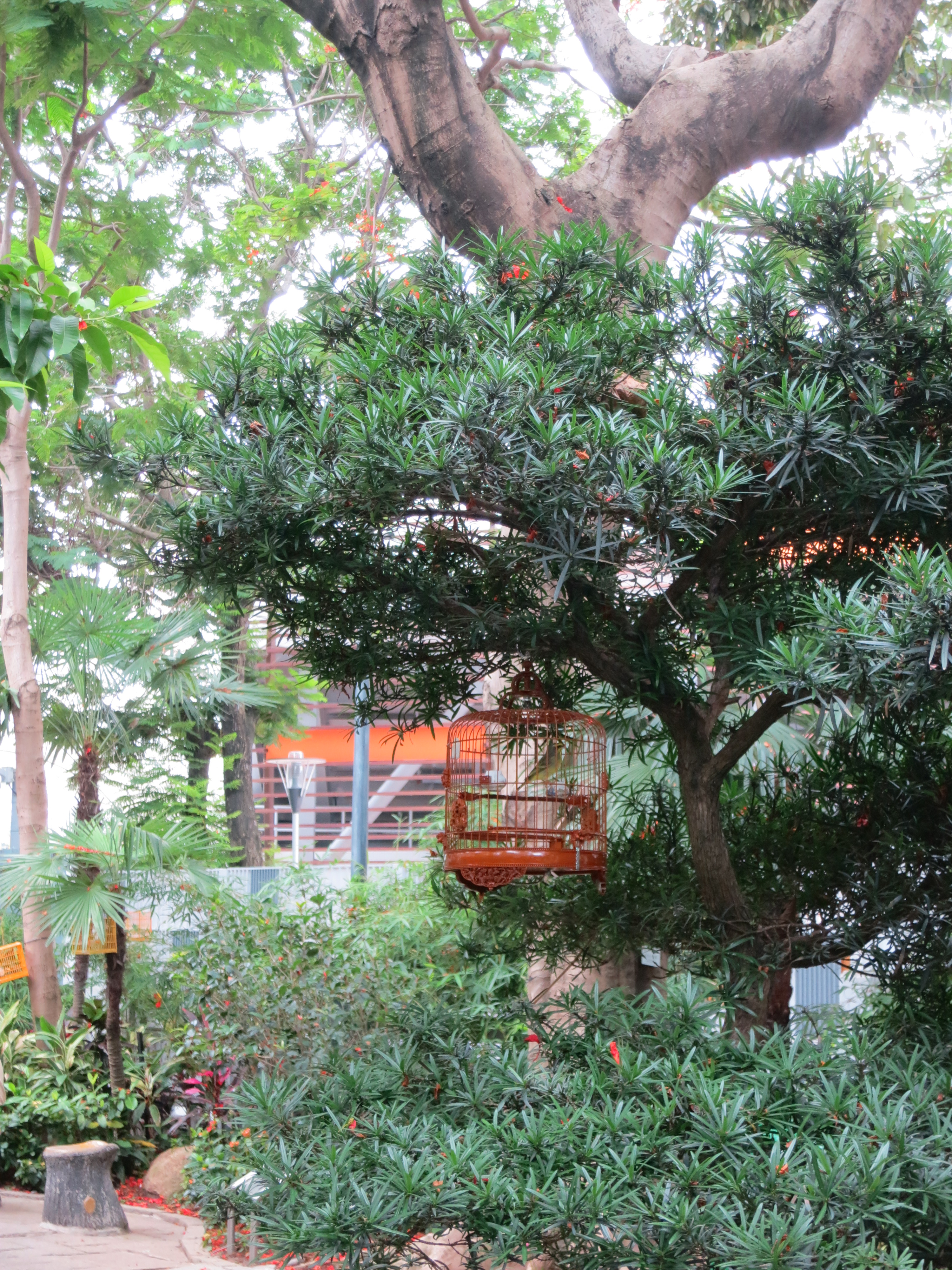
A lone bird’s cage at the birds market.
We start our journey at 旺角大球場 Mong Kok Stadium, right by the East Railway Tracks between Mong Kok East and Kowloon Tong. It is mainly a Soccer stadium and seats up to 8,500 spectators, though it is rarely full.
You can get there easily by MTR to 太子 Prince Edward.
Birds Market
Here you will find not only a broad variety of birds on sale. It’s a little but marvelous Chinese garden that seems to move at a much slower pace than all the other markets in busy Mong Kok. It is especially wonderful on Sundays and public holidays, when Hong Kongers take out their birds “for a walk” and to show them off to spectators and other bird owners.
350m Flower Market
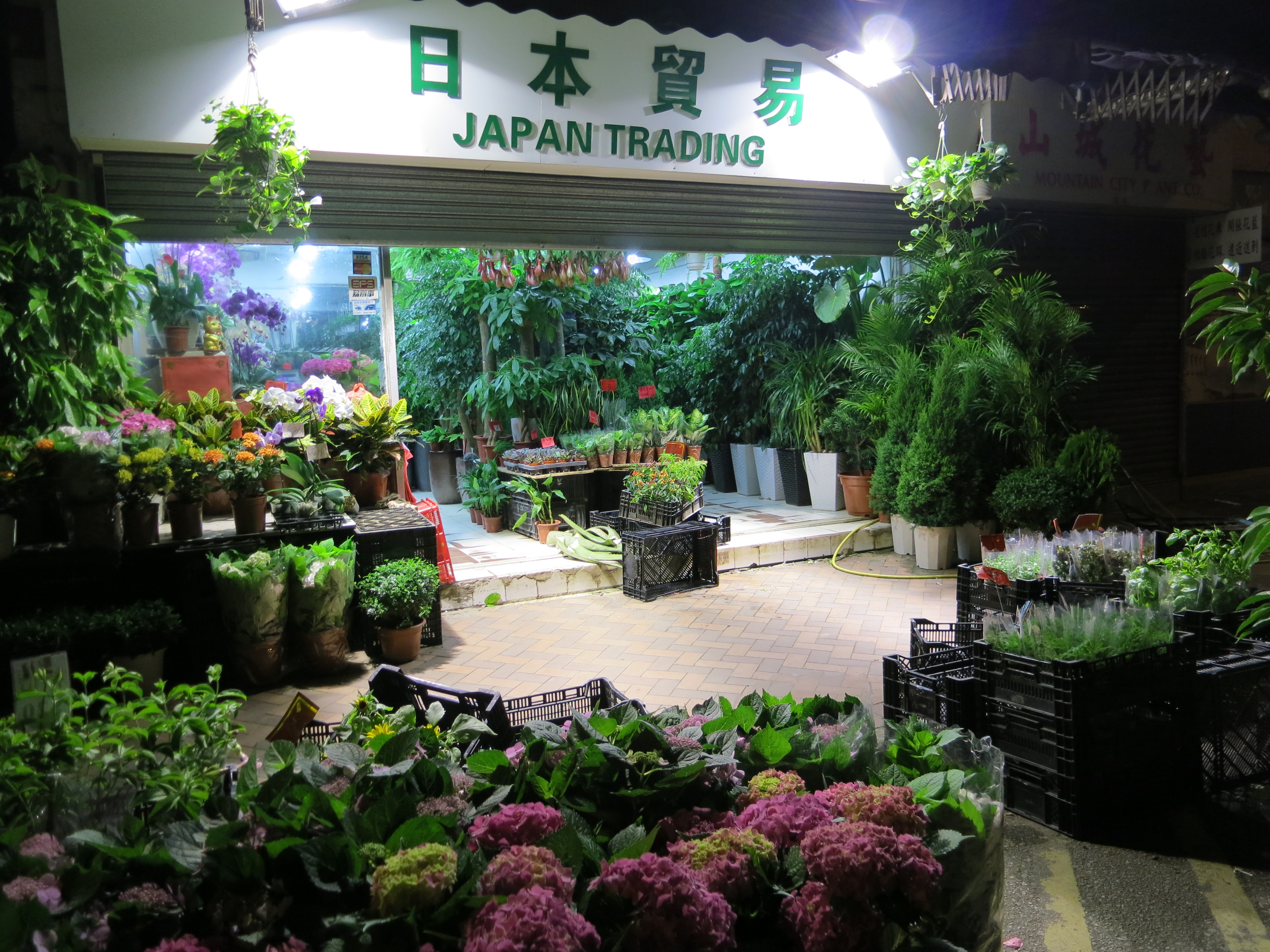
A shop open late at the flower market.
Just next to the Bird’s Garden, south of Mong Kok Stadium is Flower Market Road. Flowers are flown in every day from all parts of the world, and this market is great just for its many scents and odors. In the weeks before Chinese New Year, additional space is cleared for the many traditional and decorative plants, such as the Kumquat, symbolizing luckyness.
300m Tung Choi Street, Goldfish Market (parallel, Fa Yuen Street)
West of the FLower Market, just opposite of Prince Edward Road is the beginning of Tung Choi Street and just next to that, Fa Yuen Street. Fa Yuen Street is a very cheap market for textiles and accessories. Though it you will find much cheaper deals here than at Ladies Market, the products are also less fashionable and might appeal less to you if you’re out shopping for souvenirs.
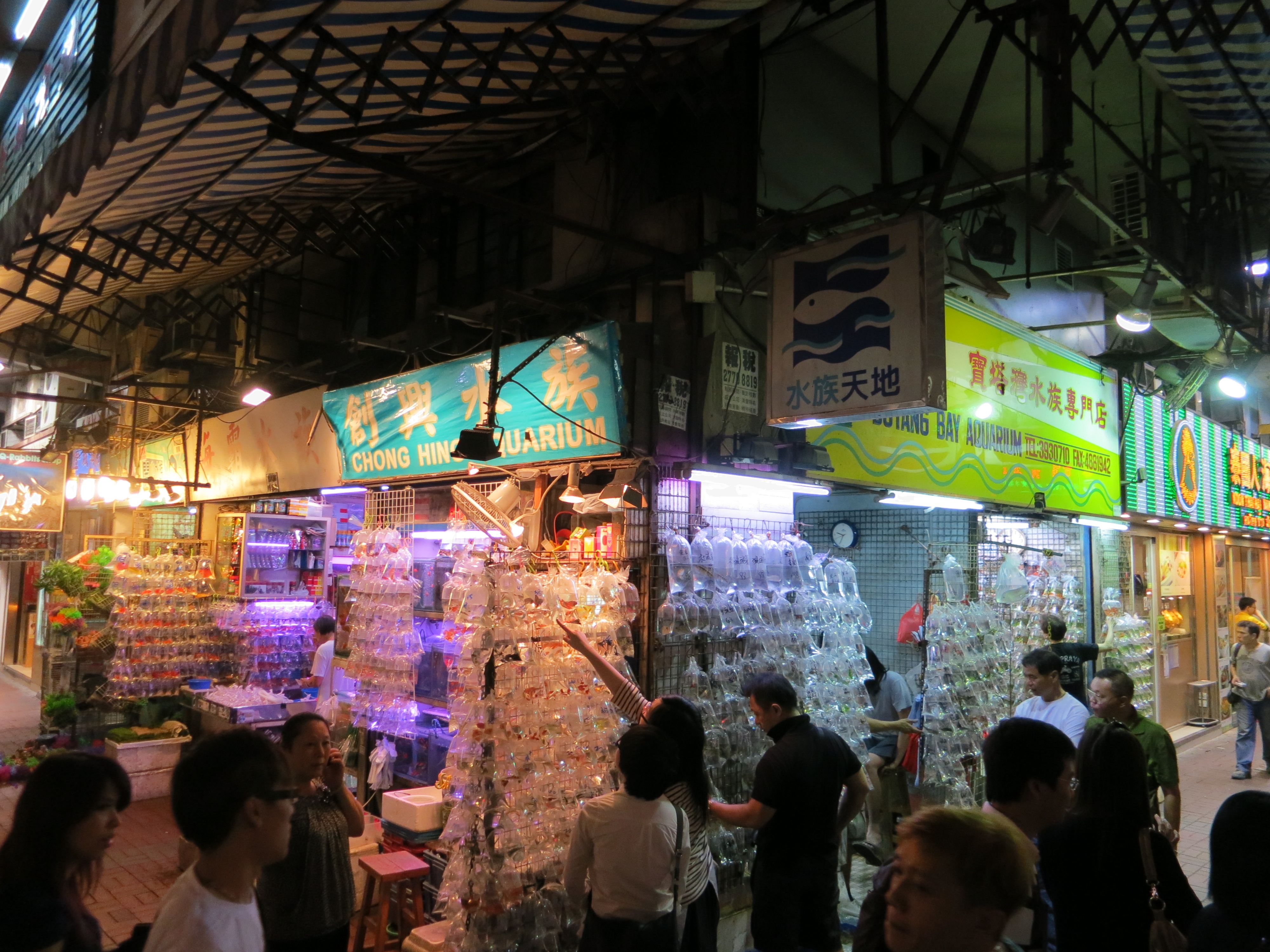
Many fish at sale on the Goldfish Market, sometimes referred to as Pet Street.
Goldfish market, or Pet Market on Tung Choi Street sells a large variety of fish, reptiles, amphibians and insects. Though you will also find rodents, cats and dogs, it is quite understandable that Hong Kongers, who already live in quite confined space, do not want to share a large portion of their room with an animal. It is usually not seen as problematic from an animal rights perspective, though. After all, since humans voluntarily lock themselves in rooms not much bigger than themselves, why would they believe animals object?
Goldfish, in Feng Shui a symbol for wealth and prosperity, are a nice alternative to larg pets. They do not smell or take up too much space, and even if they die it is said to be good luck, because the fish soaked up the bad luck, so that you would not have to.
Fa Yuen Street Wetmarket
The Goldfish market ends after about 300m at Mong Kok Road. One block to your left, on the other side of Mong Kok Road is the Fa Yuen Street Wetmarket. On the ground floor you find plenty of live fish and sea food, on the upper level live birds and red meat, including pigs’ faces and goat heads. I personally am fascinated with wet markets. One of my Chinese friends once asked me why I am so fascinated by them, and I replied that I simply never experienced shopping like this.
His point was quite clear: “Well then how do you know your shopping is fresh?”. Point taken, sir.
150m to Argyle Road
From here you will have to continue to Argyle Street. Argyle is the old British name of Mong Kok, as well as the old name for Mong Kok Station.
500m Tung Choi Street (Ladies Market)
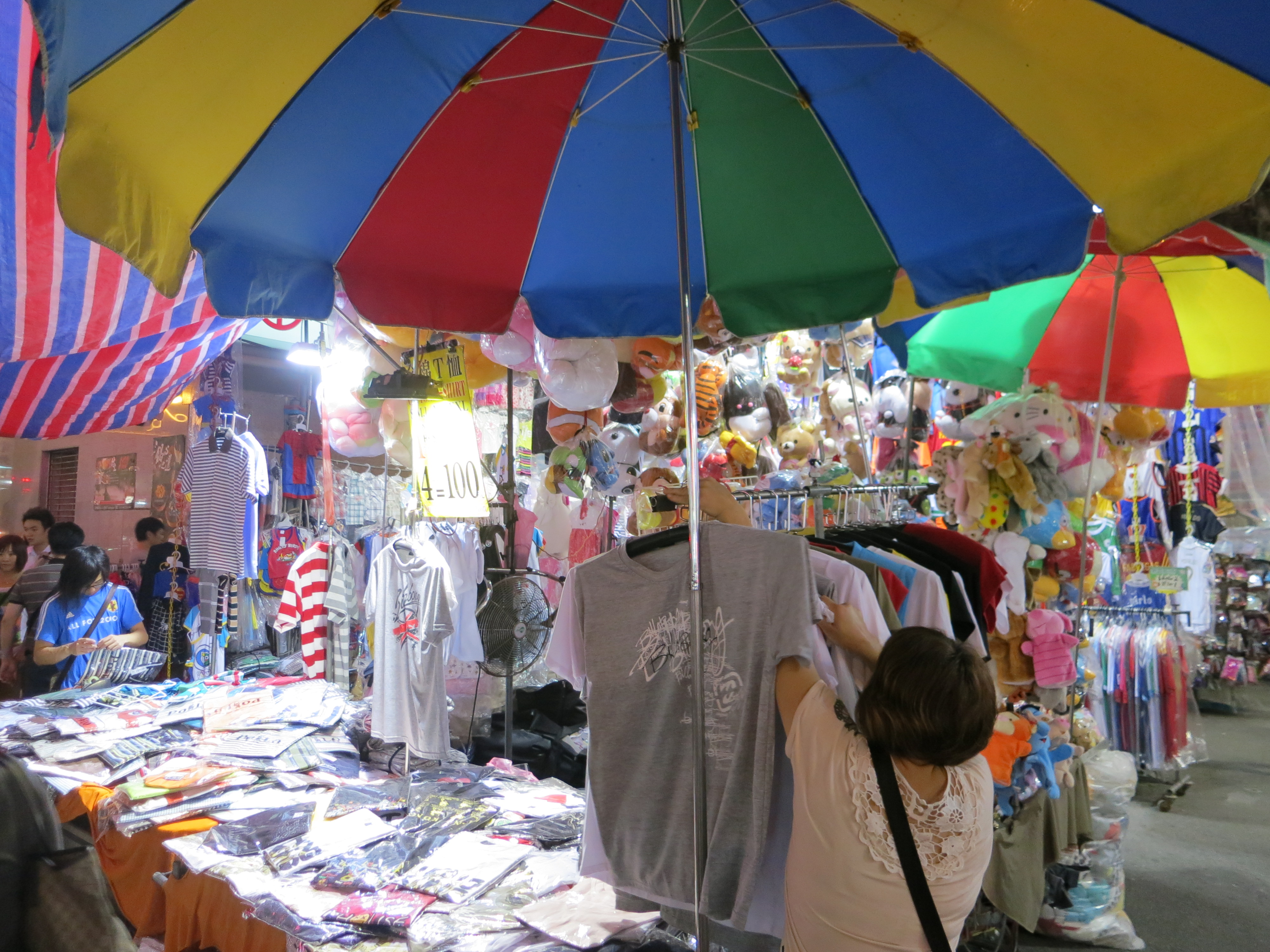
A typical shop on Ladies’ Market, selling clothes and memorabilia.
On the other side of Argyle Street awaits you Ladies Market. Contrary to its name it sells all sorts of clothes, accessories, souvenirs and junk. Haggling is strongly encouraged, and you should not settle above 50% of the initial offer. Having said that, it is quite difficult to assess the true value of the offered goods, so do not make any significant investments.
Though Ladies Market target tourists much more than Fa Yuen Market, their main differences lie in their storage. The buildings along Ladies Market are generally more modern and have elevators, allowing the sellers to store their merchandise in the buildings at night. On Fa Yuen Street however, there is not enough space in the buildings along the market, and hawkers are required to store their goods in the green boxes that you see installed by the side walk.
The government however suspects many hawkers to illegally store goods in the buildings nearby, blocking fire stairs and emergency exists. These practices have been blamed for the high death toll in the November 2011 Fa Yuen Street Fire, killing 9 people and leaving 118 people homeless.
500m to Temple Street
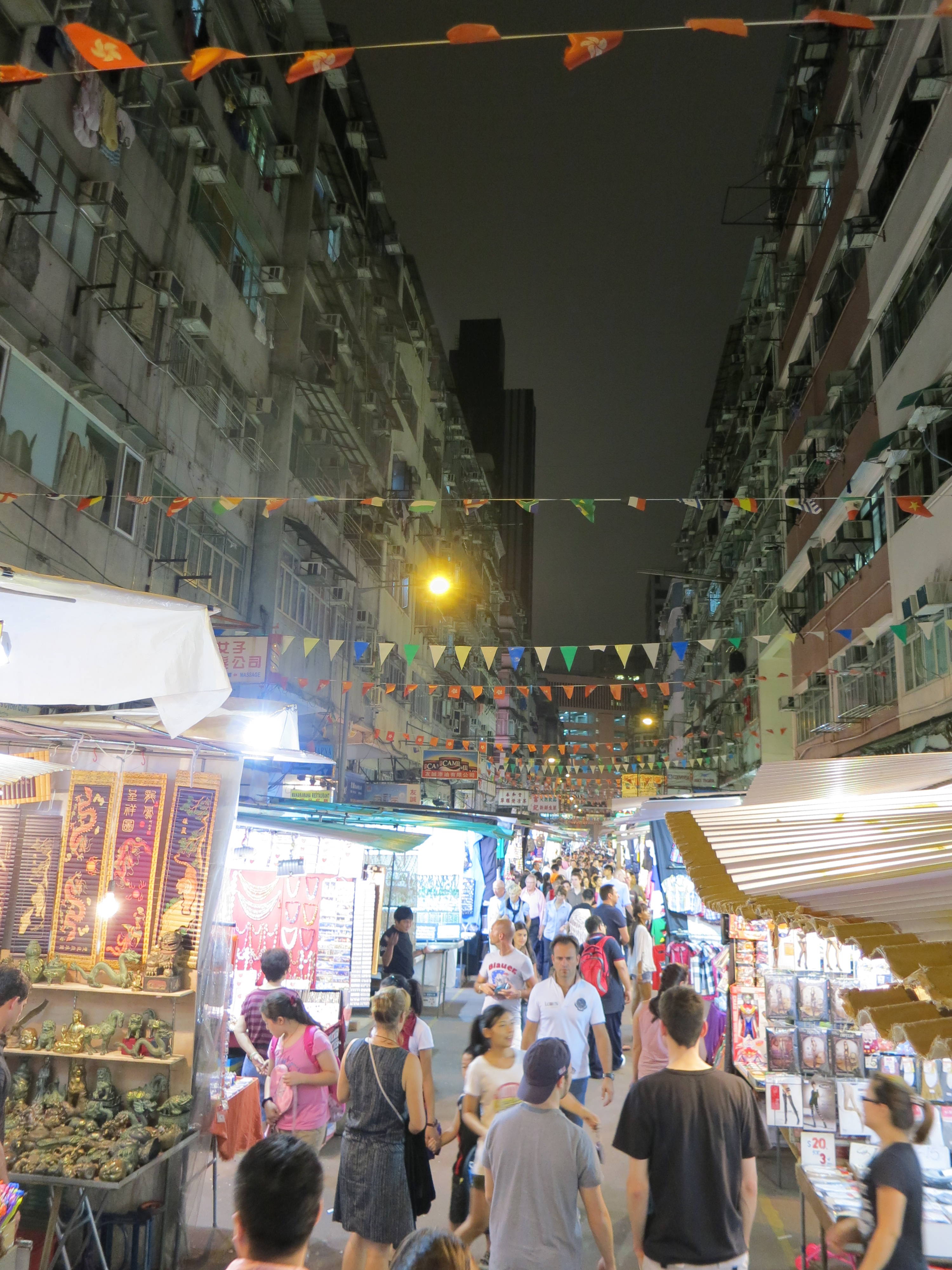
Looking north on Temple Street
The Ladies Market ends at the corner of Dundas Street. As stated in this article, this is a great place for street food. I encourage you to keep both eyes open!
To get to Temple Street, take a right at Dundas street, pass across Nathan Road and take a left at Portland Street. It will eventually turn into Temple Street.
450m Temple Street
The first half of Temple Street is very difficult to characterize. Everything is sold, from old electronics, souvenirs and games to high quality fake headphones, stones and sex toys. Haggling is again a must, though you will not find the same kind of crazy prices as at the Ladies Market. Expect a 20% to 30% discount from the initial offer.
Fortune Tellers
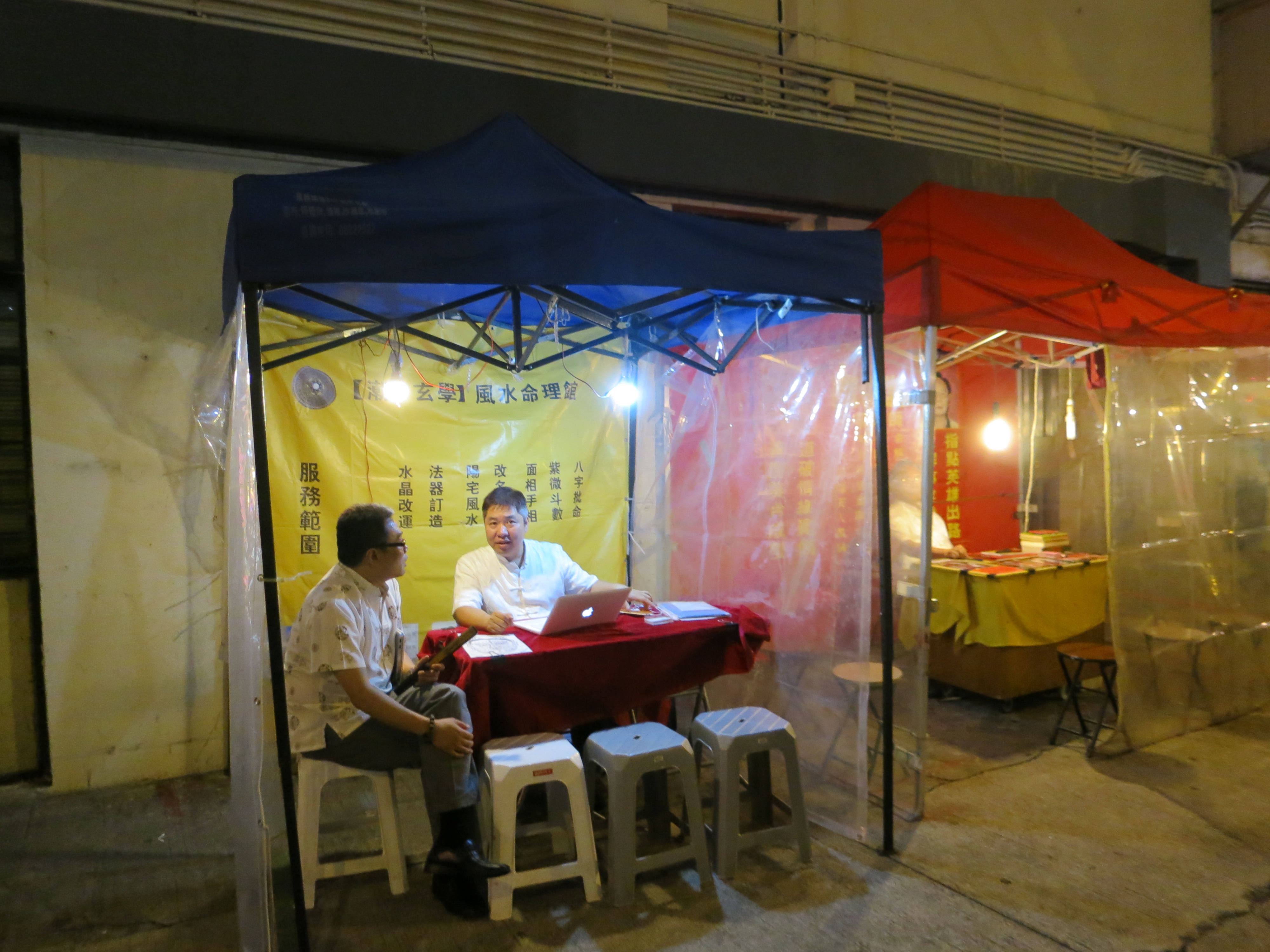
Fortune telling has arrived in the present, using Macbooks to tell you what you already know, in a worrysome voice.
When Temple Street passes around the Tin Hau Temple, you will see a significant number of Fortune Tellers. It costs between 50 and 200 HK$, and though not verifyable, it will leave you wondering…
Jade Market
The Jade Market, just west of the Tin Hau Temple / Yau Ma Tei Community Centre Rest Garden actually does offer some high quality stones, but be careful if you plan to spend a lot of money, and definitely inform yourself before online!
750m Temple Street
The second half of Temple Street is a lot more like Ladies Market, though also quite worth the trip for its streetfood.
Singapore Spicy Crab
In the area just before Jordan Road you will find plenty of Seafood places with many seats outside. They are quite famous for their Singapore Spicy Crabs, sold by the pound at market value (about 350 HK$ for two crabs). I really enjoy them every time I’m there, but the spiciness can be a challenge. To relieve your taste buds, try some Ayran from one of the Turkish places in the area.

Very comprehensive! More information about the licensing irrationality here: http://hk.asia-city.com/city-living/article/little-green-shops